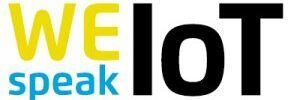The potential of Smart Farming was highlighted by the “Farming and Food Technology Trends” focus day in Bielefeld on September 25, 2019 in Bielefeld.
The potential of Smart Farming was highlighted by the “Farming and Food Technology Trends” focus day in Bielefeld on September 25, 2019 in Bielefeld.
Imagine an industrial environment: a large production hall, where complex machines work around the clock, interact with each other, depend on each other. Now, imagine an IIoT ecosystem whose task it is to monitor every single detail within the production process: positions, speed, temperature, pressure, energy consumption, filling levels – all the metrics that play a crucial role for an efficient process. To reduce idling, prevent failure or simply save resources, hundreds, if not thousands of sensors are needed. The more the better. But with only a centralized intelligence, Industrial IoT (IIoT) could quickly become a bumpy ride.
Humans have been farming successfully for thousands of years, for most of that time using only the most primitive of technologies. Only in the very recent past have computers begun to have an impact on the way that farmers grow crops and raise livestock. So it might seem strange to suggest that a traditional craft honed over such a long time could be ripe for reinvention via the Internet of Things.
The Internet of Things might not grow as quickly as predicted by some market researchers and analysts. In the long term, however, our lives will depend increasingly on connected technologies. The result of this development is that we will be more vulnerable. Despite this, the issue of security is often treated with negligence. But whoever wants to take the easy way out, pushes the residual rest on the “human factor”. We have to think further.
So far, the world of IoT consists of a very heterogeneous landscape. Multiple computing protocols like ZigBee, Z-Wave, Modbus and BACnet have their individual pros and cons and therefore all a right to exists — depending on their individual use case. But in an Internet of Things world, everything and everybody is connected — from consumers in sensor-rich environments to enterprises harnessing new technologies like robotics and machine learning. Since we lack one common language for the IoT there is no way around a solution capable of connecting all these standards. But still, the intelligence will move to the edge of the networks. Devices will interact directly. The cloud remains for analysis.
Let’s face it: Explaining the Internet of Things and the advantages of direct communication between devices can be a dry and theoretical topic. So we decided to literally spice the whole story up and add a little bit of gamification to the issue: In future events we’re going to demonstrate our technology with a smart game of dice that communicates its result to a vending machine, releasing a pack of Lemonbeat branded snack chips in case players sucessfully rolled the dice.
Asked if it’s better to go for a cloud- or rather an edge-based IoT solution, the answer is, as so often in life: It depends. But lets take a step back first and define what we mean when talking about cloud, edge or fog computing.
